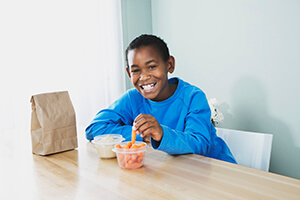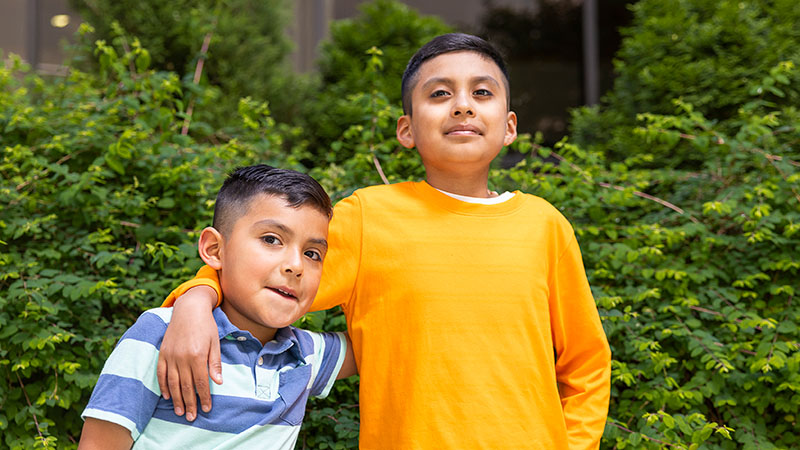Healthy Snacks: When, What and Where
 Families thrive on healthy habits and routines. Having a regular snack schedule for your child is a smart practice. For most kids, 3 meals plus 2 snacks a day is a healthy way to go. This fuels them with the nutrients they need to think, learn, grow and play. Offering regular meals plus small healthy snacks also helps a child discover how much food their body really needs.
Families thrive on healthy habits and routines. Having a regular snack schedule for your child is a smart practice. For most kids, 3 meals plus 2 snacks a day is a healthy way to go. This fuels them with the nutrients they need to think, learn, grow and play. Offering regular meals plus small healthy snacks also helps a child discover how much food their body really needs.
Create well-balanced snacks by choosing items from 2 or 3 different food groups, including fruits and vegetables. For example, berries, yogurt and nuts provide a fruit, dairy and protein. Carrots, string cheese and whole-wheat crackers provide a vegetable, dairy and whole grains. Offer a wide variety of foods so your child learns to try new tastes. And invite them to choose and help prepare the snack with you.
Whenever possible, avoid snacks that are seen as "treats" such as foods that are too sugary or salty or that offer empty calories. A snack should serve as a mini meal by satisfying hunger, but it should not cause a child to fill up so much that they don’t want to eat at meal time.
If possible, give snacks at a regular eating spot like the kitchen table or a counter. When the weather allows, it’s fun to eat outside on a patio table or picnic table. Or enjoy a "tailgate" snack in the car after playing at your favorite park. Wherever the location, make the food (along with some friendly conversation!) the focus.
Avoid snacking while watching screens, as this can lead to automatic or unconscious eating. Being fully aware of what they’re eating allows a child to feel their body’s cues that tell them whether they’re hungry or full. This ability to tune in to their body is a crucial skill that will serve them their entire lives.
Get more tips on healthy eating habits.


